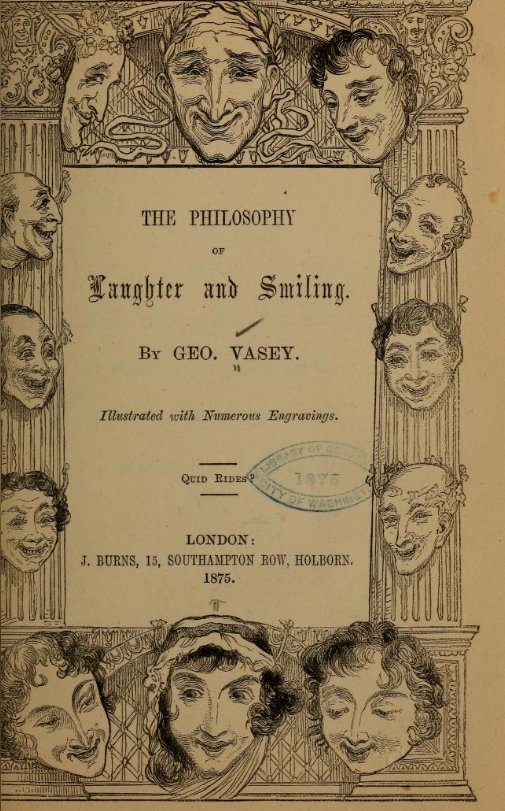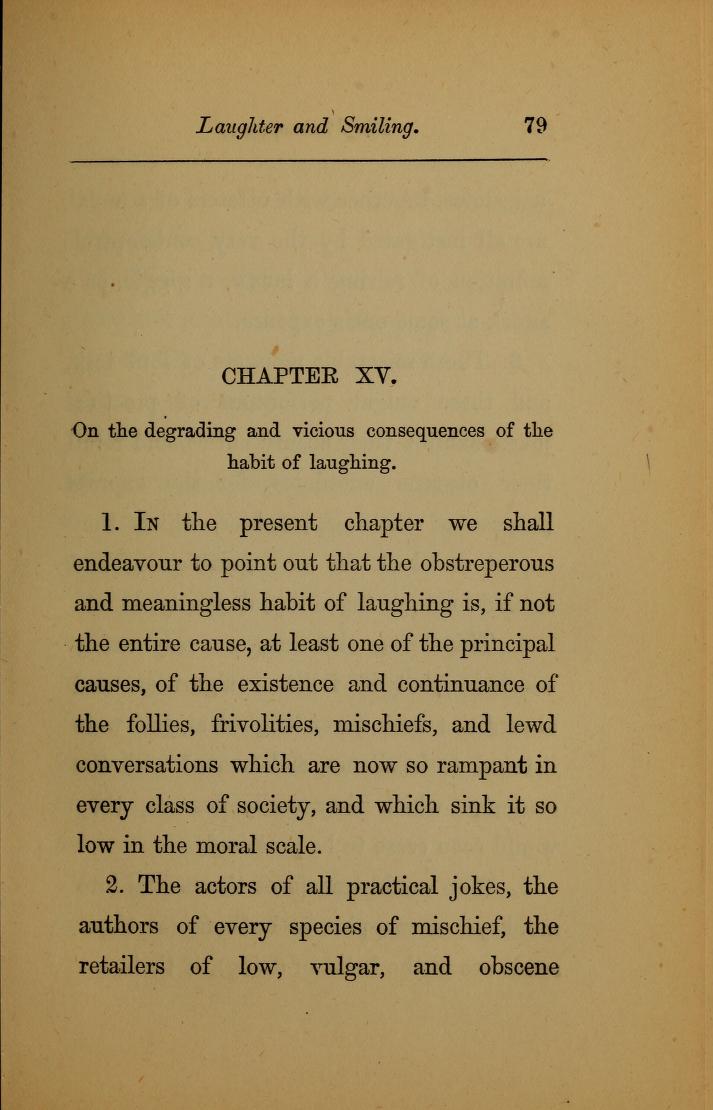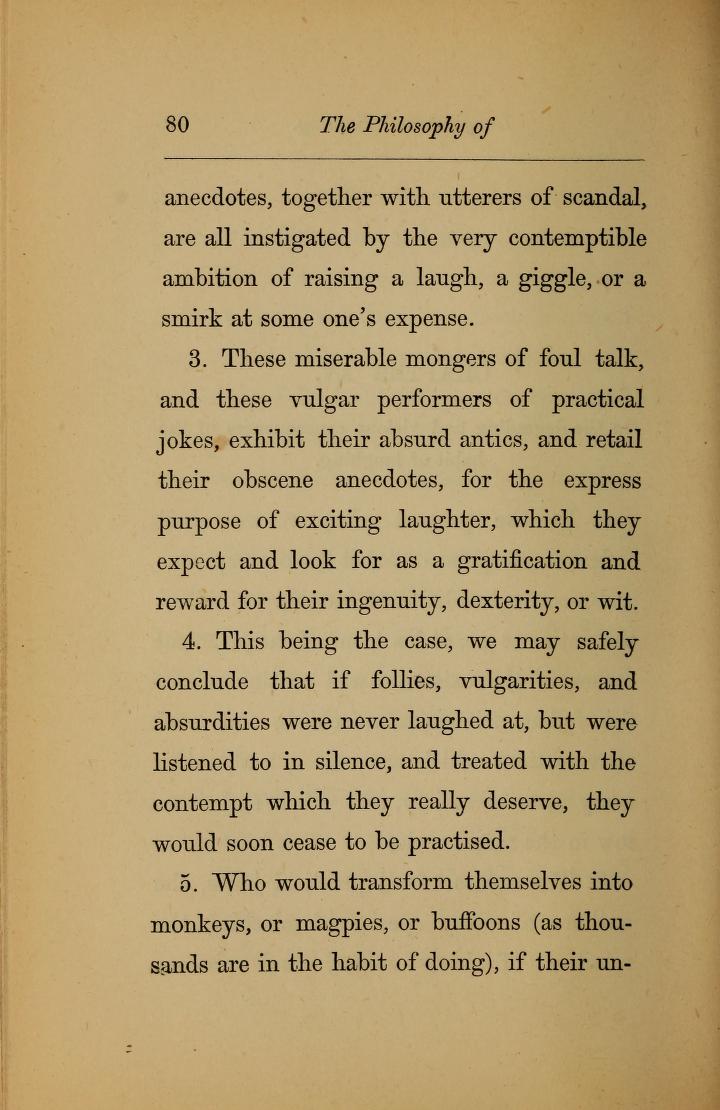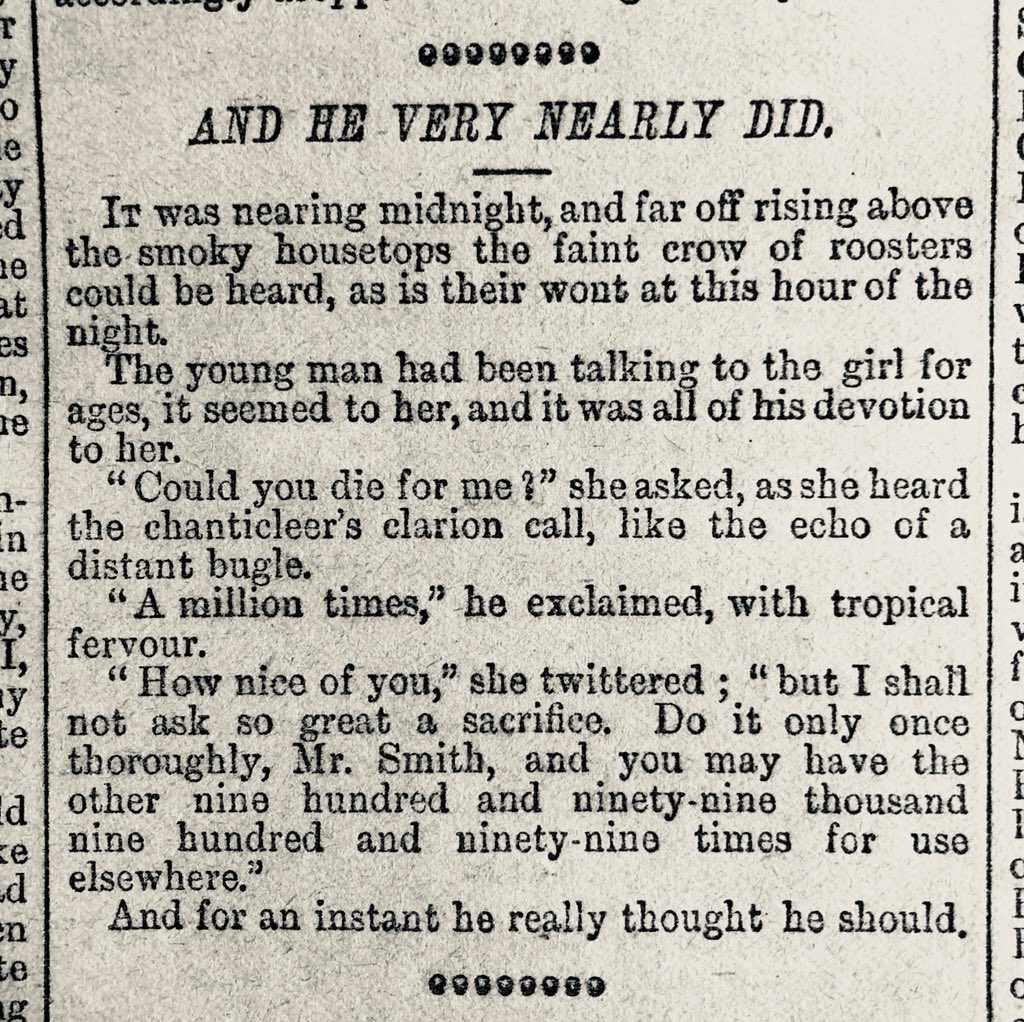
Brace yourselves for a SHOCKING revelation! The term "curate's egg" - meaning something that is partly bad, but also partly good - is typically thought to originate from a Punch cartoon by George du Maurier. But... [/1] 
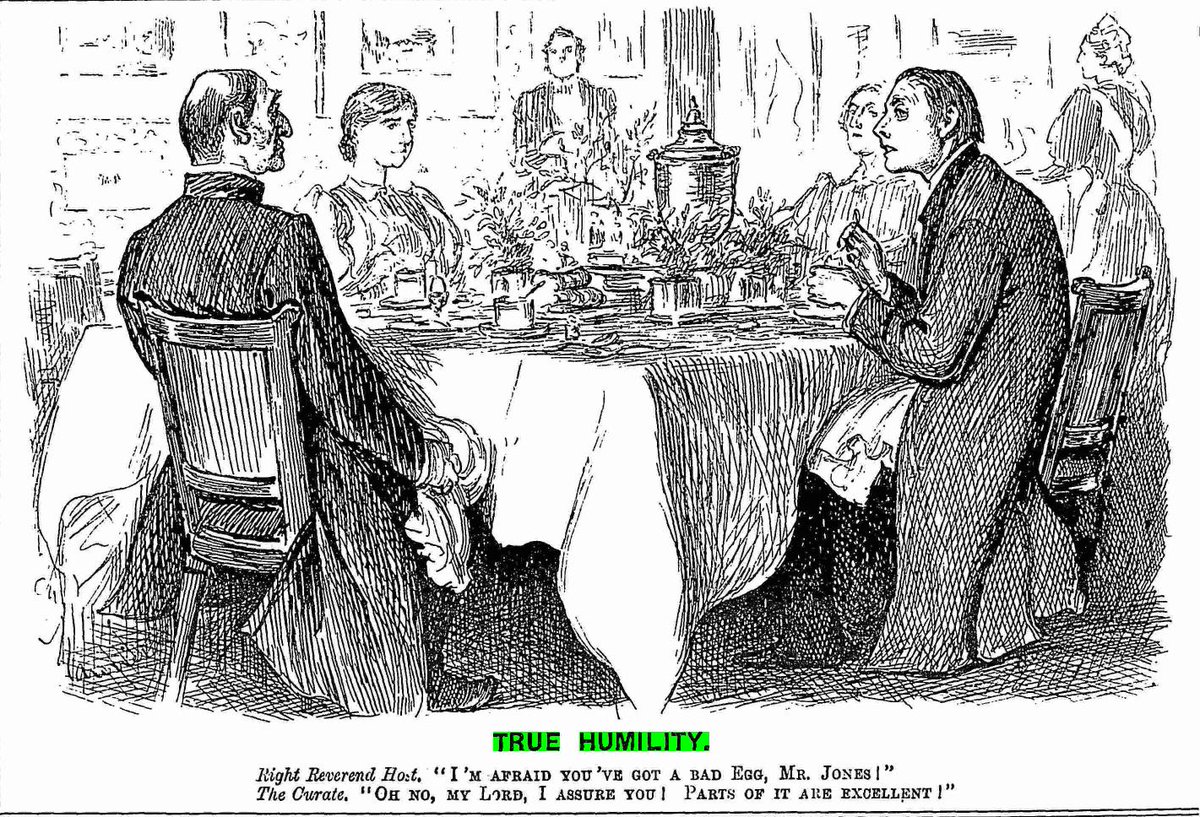
George du Maurier's cartoon was published in Punch on 9 November 1895. Here's a joke published in Pearson's Weekly nearly five months earlier, on the 19 June 1895. [/2] 

This wasn't unusual - in fact, lots of jokes that are widely credited to the genius of Punch's cartoonists were actually written by other people, or sent in by friends and readers. See Du Maurier's system of 'joke pots'. [/3] 

Punch wasn't the only paper to recycle gags. Joke piracy was rampant in the 19th century, and it allowed particularly popular jests to 'go viral' around the world. You can learn more about this in one of my articles, which is currently free to read: academic.oup.com/jvc/article/17… [/4] 

In his 1895 'History of Punch', M. H. Spiellman claims that members of the public also sent comic sketches to the magazine's cartoonists. When these submissions were adapted for the paper, artists like Du Maurier and Charles Keene published their verions unsigned. [/5]
For example, here's a sketch that was sent to the magazine by a gentleman named Henry Walker. He reportedly sold quite a few sketches to Charles Keene, although this one was was adapted by Du Maurier. [/6] 

It's striking, in other words, that the *visual* component of Punch's cartoons was afforded some kind of artistic respect & protection; sketches were bought, or at least republished unsigned. But *textual* jokes were seemingly reused with impunity. [/7]
Similarly, jokes published as cartoons in Punch were widely reprinted in other newspapers within hours, but they used the captions and discared the images. Punch doesn't seem to have minded this piracy too much. But when a publisher reused their cartoons, they sued! [/8]
Here's an over-complicated table I made tracking the reprinting of jokes from a single isse of Punch. Each column represents a joke. Newspapers run down the left-hand-side in chronological order. Shaded boxes represent a reprint. The numbers aren't important right now. [/9] 

Punch returned to its famous curate's egg cartoon in 1992 for the magazine's final issue, with a subversive re-telling that highlighted the apparent death of Victorian manners. [/10] 

Of course, we *now* know that the original wasn't actually so respectable after all! It was adapted (we might even say 'stolen') from another paper, and passed-off as Punch's own. Seedy behaviour, hiding beneath a thin veneer of respectability. How very Victorian! [11/11]
Side note: don't worry folks, I *am* aware of the irony of using this particular twitter account in order to accuse Punch of recycling other people's jokes...
The plot thickens! I suspected that Pearson's Weekly wasn't the original source of the 'curate's egg' joke either, so I've been trying to find earlier examples. It turns out that an illustrated version appeared in Judy magazine a month earlier... 
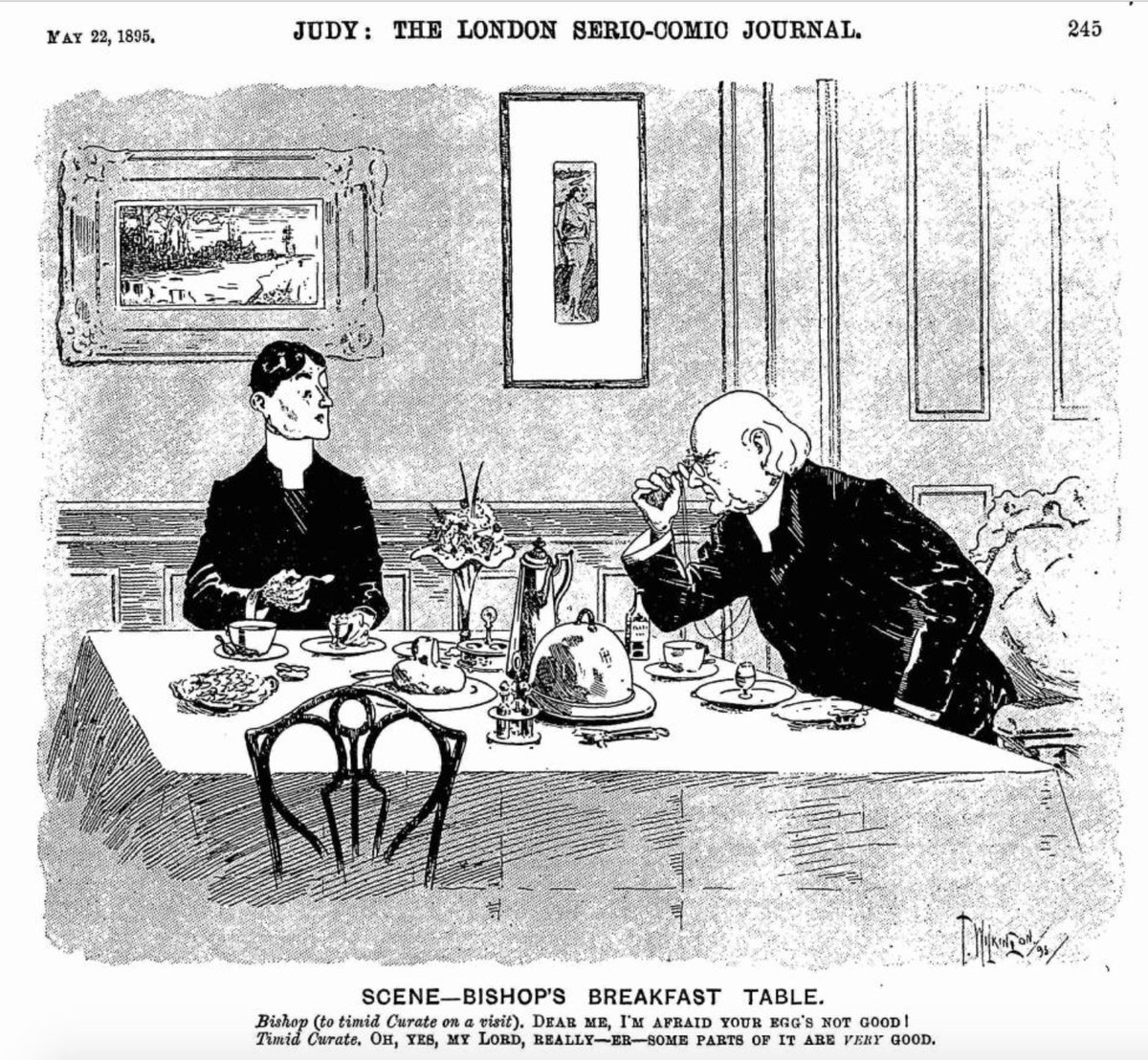
Judy was Punch's fiercest rival in the world of weekly satirical magazines, so this is quite a juicy revelation! But it gets even better...
Shortly after Punch 'stole' their joke, Judy called them out on it! All things considered, they were actually fairly gracious about it all and imagined a scenario in which Du Maurier might've heard the joke at a social ocaision and then "fallen back on it in sheer desperation." 

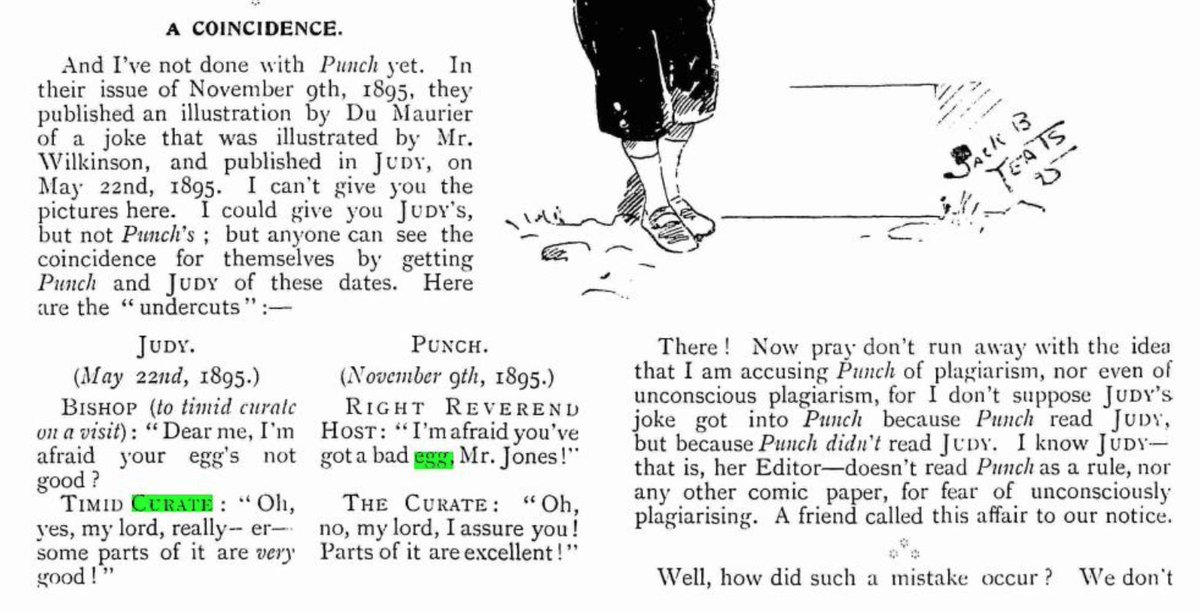

Judy complained that "all good things are credited to Punch, whether Punch is the author of them or not." That's exactly what when on to happen in this case too! Within months the phrase was being invoked more broadly... and invariably attributed to Mr Punch. 

All of which reveals useful insights into the place of Punch in Victorian culture. It wasn't always the originator of jokes, and it wasn't even the most popular vehicle for them - penny weeklies like Pearson's and Tit-Bits were packed with jokes & had an audience 10 times larger.
But you can't deny Punch's influence. It's best jokes were reprinted by countless provincial and metropolitan weeklies (usually under headings like 'Pickings from Punch'), giving it an amplified secondary readership far exceding its core subscribers.
More importantly, by the late-19thC, Punch's longevity imbued it with a cultural cachet that its younger rivals couldn't match; the paper was widely regarded as a British instiution. If The Times was the 'paper of record', then maybe Punch was considered the 'joker of record.'
The most striking thing, for me, is that people seem to have *remembered* jokes from Punch, in ways that I haven't seen with other Victorian comic papers. Writers in the 1890s would reference Punch jokes from their youth and assume that everybody knew what they were reffering to.
This is echoed by the ways that Punch was preserved. Second hand bookshops are awash with old volumes. Penny weeklies - like Answers or Tit-Bits - which circulated more widely at the time are now harder to come by. They were discarded; Punch was kept, or re-bought in bound form.
There are class & gender dimensions to all of this, of course. Punch was very much the paper of the politically-engaged, literary, middle class man; the kind of people who had (and still have) a disproportionate influence over both 19thC culture and the historical record.
One of the aims of this research project is to de-centre the history of Victorian humour; to locate laughter beyond the pages of Punch, and enable historians to read jokes that were told by other voices, and to other audiences.
But I mustn't marginalise Punch too much in the process. The case of the curate's egg sums things up nicely. It only gained currency - and eventually imortality - because Punch published it. They didn't invent the joke, but perhaps we could could say that they *made* it.
/Thread
/Thread
An addendum (because I'm clearly obsessed with this stupid joke):
Most reprints of the curate's egg joke just copied Punch or Judy's caption word-for-word. But, in 1899, a Middlesbrough paper re-printed it in the form of a 'true' story. It's worse in every single respect...
Most reprints of the curate's egg joke just copied Punch or Judy's caption word-for-word. But, in 1899, a Middlesbrough paper re-printed it in the form of a 'true' story. It's worse in every single respect...

• • •
Missing some Tweet in this thread? You can try to
force a refresh


